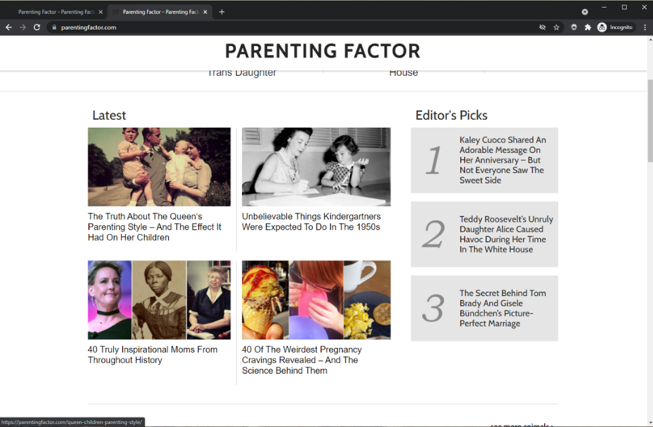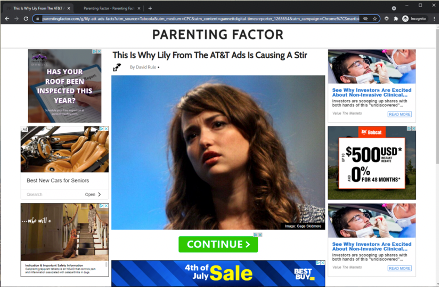Things to Consider When It Comes to Programmatic Advertising
8 December 2021

Far from all online ads are effective: waste and fraud play a role in the ad market. Many of these problems are related to Programmatic Advertising. Here you can read about the different forms of fraud (including ad-arbitrage) and why a strong brand safety strategy is important.
Despite all initiatives, there is still a great deal of uncertainty about the precise extent of advertising fraud. This is partly because the phenomenon is difficult to define. But one thing is clear: ad fraud is inextricably linked to Programmatic Advertising. Programmatic buying of online ads makes it very easy to buy ‘views’, which are impressions that are only viewed by a qualified viewers.
FRAUD WITHIN PROGRAMMATIC ADVERTISING
The number of blogs about fraud in online advertising is almost uncountable, but remarkably enough, hardly anything has been written about ad-arbitrage. At least in the Netherlands: the English-language media cannot get enough of it. Ad arbitrage was a hot topic last year, partly because ad platform Taboola went public.
Why this is and why ad-arbitrage deserves the right attention, I will tell you in this article. Before I do that, I’ll list the most common forms of fraud for you: Adstacking – a publisher places multiple creatives (ads) on top of each other in layers, loading all the creatives as impressions, but only the top one is visible.
We could list several reasons focusing on what the needs of the viewer are. If we take into account that users are used to the consumption of advertising on linear TV, we know that they are willing to watch advertising as long as the content is sufficiently relevant to them. This represents a great opportunity for ad.
- Invisible ads – a publisher places a creative in a 1 pixel by 1 pixel frame, so the impression is loaded, but never visible.
- Click fraud (bot traffic) – fake clicks on pay-per-click ads.
- Fake domains – pretending to be well-known Internet publications so that advertisers buy space which is then visited by bots.
- Fake Influencers – influencers who use fake followers to increase their reach (and compensation).
- Cowboys – dubious intermediaries and agencies who earn from uninformed publishers and advertisers without making a substantial contribution.
- Arbitrage – a publisher purchases irrelevant traffic at low cost, and with it, impressions, and sells its impressions to an advertiser at a high price.
AD ARBITRAGE: A LUCRATIVE STRATEGY
Despite the fact that the market has classified ad-arbitrage as fraudulent, many parties still see this form as a lucrative strategy. Data software company DeepSee published a report last summer showing the number of arbitrage websites that display their content in a different way to someone visiting the website via a paid link than to someone visiting the website via a direct link.
Among other things, the report shows in detail how direct visitors to a website about parenting see a page with no ads, while visitors who arrived at the same page via a paid link saw a page that loaded continuously and was full of different types of ads.


CLICKBAIT
You have undoubtedly seen website environments like the one above before. They are also called clickbait or made-for-advertising inventory, both terms used to describe websites that earn most of their traffic through sponsored content linked to chumbox ads.
Using native services such as Taboola or Outbrain, these parties place ads on legitimate news sources so that users are encouraged to click through to their websites.
Once a user clicks, they are directed to these sites, which are full of above-the-fold and high viewable ads – hence the name made for advertising – but with no real content. Or you should find “Vintage photos of women getting tattoos” informative.
Publishers such as CNN, Vox, Huffington Post and countless others find it difficult to say no to clickbait platforms because they simply don’t want to turn down the revenue. As a result, made-for-advertising websites are full of ads from Philips, ABN Amro, Coolblue and many more top advertisers.
ANYTHING BUT BRAND-APPROPRIATE
Although such websites exist solely to generate advertising revenue, they are still considered brand safe. After all, the websites are legitimate, they do not contain fake news (in most cases), they are popular and buying advertising space there is very cheap.
I find it remarkable that such websites are considered brand safe. After all, how can a website be seen as relevant when the content is of such poor quality? The risk for a brand of being associated with the wrong type of content or domains is so much bigger on these types of websites.
BRAND SAFETY STRATEGY
Instead of opting to purchase at the lowest possible price, advertisers (large and small) should focus on brand safety. Every brand has to make sure that their ad is shown in the right context and not next to content they do not want to be associated with or that simply does not fit their brand.
Therefore, I always recommend taking advantage of brand safety filters and excluding content that has not yet been vetted by the website and is labeled “not yet rated” from campaigns. This includes any content labeled “mature audiences.” To ensure that your ad is only shown on websites that align with your brand, my advice is to purchase through a private marketplace (PMP) and/or use a whitelist.
THE MARKET IS NOT THERE YET
While the industry as a whole has come a long way and has already taken many good steps to make the industry fairer and more transparent, unfortunately there are still some gaps that can lead to ads appearing on a particular website without intent. Therefore, as an advertiser, you should only work with parties who can guarantee that your ads will only be shown in quality environments and who are also completely transparent about their prices and publications.
Read the original article posted on Emerce.
This article was written by Erik Dubbeldeman, Country Manager ShowHeroes Netherlands.
